Statue of Stonewall Jackson (1821-2021)
Introduction
Text-to-speech Audio
A statue of Civil War General Stonewall Jackson was dedicated at this location in 1921 and removed in 2021 after years of community discussion and public debate. The dedication ceremony in 1921 celebrated the war as a noble cause to defend "Southern institutions" - a clear reference to slavery in an era of segregation. By contrast, the removal of the statue was done privately owing to fears of violence by the statue's defenders. As evidenced by the dedication speeches, the statue was intended to reflect the early 19th century defense by many white Southerners of the "Lost Cause" ideology of the Civil War. At the same time, the dedication ceremony included tributes to Confederate veterans and the military leadership of Jackson. The statue was located next to Albemarle County Courthouse and created by artist Charles Keck. At the time of its dedication, it was considered one of the best equestrian statues in the world.
In 2012, Charlottesville vice-mayor Kristin Szakos attended a history lecture by Edward Ayers. The vice-mayor asked a question that was on the minds of many residents-"should the city consider" moving or even destroying Confederate monuments given their connection to men who fought to defend slavery and the racial politics of many of the people who erected these statues in the early 1900s. She also asked if the city should consider creating new monuments to honor Virginians who fought for the Union and/or against slavery. The city’s first Confederate statue was unveiled in 1893-a year that coincided with a sudden increase in racial violence. The statue to Confederate General Robert E. Lee was dedicated in 1924-the same year that Virginia saw a peak in racially-motivated lynchings. The question led to a firestorm of controversy, with the vice-mayor receiving a number of threatening phone calls from defenders of the Confederate monuments. In the years that followed, more attention has been given to the connection between the sudden "explosion" of Confederate monuments and the racial politics of the era and the disturbingly high number of lynchings throughout Virginia. Defenders of the statue point out the men like Jackson and Lee were military leaders who performed well on the field of battle and distanced themselves from the politics of the war. The question of the statue's propriety, like the nature of the war itself, remains controversial even after its removal. While it stood, historians like Ayers recommend more interpretative signage to demonstrate the contested nature of historical memory. After removal, historians continue to emphasize the importance of context and interpretation as communities reimagine their monumental landscapes.
Images
The statue was a gift from Paul McIntire in 1921 to the city of Charlottesville. Like many other Confederate monuments, the meaning of this statue has been a subject of debate that demonstrates how historical interpretations change over time.
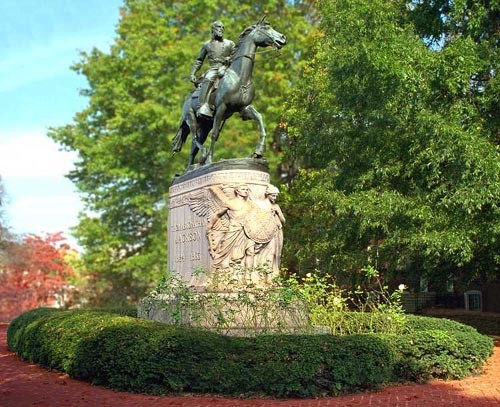
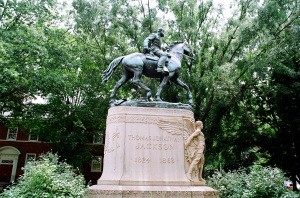
McKee Row in Charlottesville around 1919. This row was taken down to make way for Jackson Park and the statue. Courtesy of the Holsinger Studio Collection, Special Collections Department, University of Virginia Library
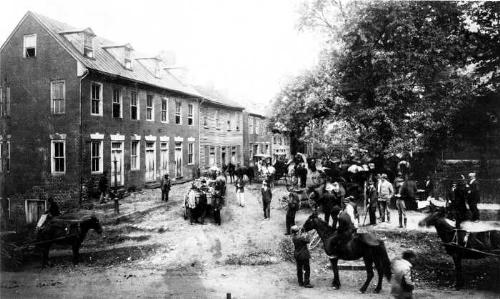
Unveiling Day in Charlottesville. Courtesy of the Holsinger Studio Collection (#9862), Special Collections Department, University of Virginia Library
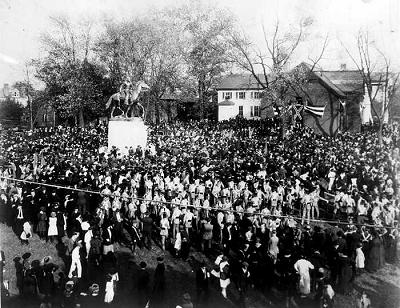
1921 flier from the joint committee of Confederate Veterans, Sons of Confederate Veterans and Daughters of the Confederacy for Unveiling Day. Courtesy of the Holsinger Studio Collection, Special Collections Department, University of Virginia Library

McKee Row in Charlottesville around 1919. This row was demolished to make way for Jackson Park and the statue. Courtesy of the Holsinger Studio Collection, Special Collections Department, University of Virginia Library

For a critical review of Confederate markers, the "Lost Cause" ideology, and historical memory of the war at the time of this statue's dedication, consider David Blight's work, linked below.
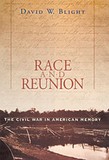
Backstory and Context
Text-to-speech Audio
Thomas Jonathan “Stonewall” Jackson was born January 21st 1824 in Clarksburg, Virginia (West Virginia today). Largely self-educated until he was accepted to West Point, Jackson possessed an advanced understanding of mathematics as well as military tactics. Following his graduation from West Point, Jackson served in the Mexican American War as a 2nd Lieutenant for the 1st Artillery. Jackson participated in the siege of Veracruz and the Battle of Mexico City. During the war, he Robert E. Lee and many other future Confederate officers.
After the Mexican American War Jackson, retired from the army and took a teaching position at Virginia Military Institute (VMI) where he taught philosophy classes and courses on artillery tactics. In 1853 he married Elinor Junkin, but she passed away the following year as she gave birth to a stillborn son. Jackson later married Mary Morrison and the couple experienced the anguish of losing a second child when their daughter passed away a month after her birth. Jackson rejoined the military in 1859 and was one of the leading officers who responded to John Brown’s attempted raid at Harper's Ferry.
When Virginia seceded from the Union in 1861, Jackson left the federal army and joined the Confederacy. He was appointed to the rank of colonel and moved to Harpers Ferry. Early in the conflict, Jackson was promoted to brigadier general. Jackson’s actions at the Battle of Bull Run-the first major battle of the Civil War-led to his promotion. While providing reinforcements to Confederate troops, Jackson ordered his men to fill a gap in the Confederate's main defensive line. In response, General Barnard Bee famously remarked “There is Jackson standing like a stonewall.” From that moment, Jackson became revered among Southerners and known as "Stonewall Jackson." Embracing the growing legend of their leader, Jackson's troops referred to themselves as the "Stonewall Brigade."
After ending his attempted offensive into Pennsylvania following the Battle of Antietam, General Robert E. Lee promoted Jackson to Lieutenant General. Jackson took charge of Lee's second corps and led these men to victory at the battle of Fredericksburg. In May 1863, Jackson’s men attacked Union troops from behind at the Battle of Chancellorsville and forced them to retreat due to heavy losses. On May 2nd 1863, Jackson was reviewing his position at night when he was shot by a Confederate soldier who mistook him for a possible Union picket. On May 10th, Jackson the injured reportedly said “Let us cross over the river and rest under the shade of trees.” These would be his last words as he died of his wounds.
Sources
CVille Writers, "Monumental questions: Local statues are a lesson in history and a source of controversy," Cville website, June 17, 2015 (accessed 9/8/2013) http://www.c-ville.com/monumental-questions-local-statues-lesson-history-source-controversy/#.V9IYuZgrLIU "Stonewall Jackson." Bio. A&E Television Networks, 2015. Web. 05 June 2015. Billies, Richard. "The Statues of Charlottesville." Mr Jeffersons Neighborhood. Web. 5 June 2015. .
